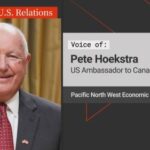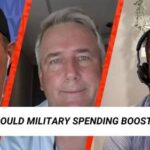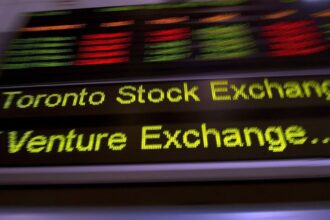The morning Linda Chen discovered her RRSP portfolio had lost 12% in management fees over the past decade, she made a decision that would reshape her retirement future. “I nearly spilled my coffee when I calculated the numbers,” says the 58-year-old Vancouver teacher. “More than $60,000 gone—not to market fluctuations, but to fees I barely understood.”
Linda’s story echoes across Canadian households as more investors question whether professional management of their retirement savings delivers value proportionate to its cost. With the average Canadian RRSP now holding approximately $112,300, according to recent Statistics Canada data, the stakes of this decision have never been higher.
The self-directed investment landscape has transformed dramatically in the past five years. Once the domain of financial professionals and dedicated enthusiasts, managing your own RRSP portfolio has become increasingly accessible through user-friendly platforms, commission-free trading options, and an explosion of educational resources.
“The democratization of investment tools has been revolutionary,” explains Maya Rodriguez, financial technology specialist at CO24 Business. “What required specialized software and extensive knowledge a decade ago can now be accomplished with a smartphone and the right apps.”
The potential savings from self-management are substantial. Consider an investor with a $400,000 RRSP paying the Canadian average of 2.1% in management fees annually. Over 25 years, assuming 7% returns before fees, they’ll surrender approximately $453,000 to fees alone—nearly outpacing their initial investment. By contrast, a self-managed portfolio using low-cost ETFs might incur fees of just 0.2-0.3%, potentially preserving over $350,000 of that amount.
However, financial advisors caution that fee comparisons tell only part of the story. “The value proposition isn’t just about cost minimization,” argues Darren Matsumoto, a certified financial planner with 22 years of experience. “It’s about behavioral coaching, tax optimization, and creating an integrated plan that aligns with your life goals.”
Research supports this perspective. A 2022 Vanguard study estimated that good financial advisors can add approximately 3% in net returns annually through a combination of portfolio rebalancing, tax-efficient strategies, and—perhaps most critically—preventing emotional decisions during market volatility.
The pandemic market crash of March 2020 provided a stark illustration of this dynamic. Data from major Canadian brokerages showed self-directed investors were 41% more likely than advised clients to sell equities at market lows—a decision that cost many their participation in the subsequent recovery that saw the S&P/TSX Composite gain over 65% in the following year.
For Canadians considering the self-directed approach, experts recommend a hybrid strategy. “Start by managing a smaller portion of your portfolio—perhaps 20%—while maintaining your advisory relationship,” suggests Rodriguez. “This creates a natural experiment where you can compare your results against professional management before making a larger commitment.”
The learning curve for effective self-management varies widely based on financial literacy, available time, and emotional discipline. Investment platforms like Questrade, Wealthsimple, and bank-owned discount brokerages have developed extensive educational resources to flatten this curve, including webinars, simulator accounts, and communities where investors share strategies.
“The critical self-assessment isn’t about intelligence—it’s about temperament and time,” notes Wei Zhang, behavioral finance researcher at the University of British Columbia. “The most sophisticated investment strategy fails if you lack the emotional discipline to execute it consistently or the time to monitor changing market conditions.”
For those committed to self-management, experts recommend starting with a core portfolio of broadly diversified, low-cost ETFs that match your risk tolerance and time horizon. This approach, often called the “couch potato portfolio” in Canadian investment circles, has consistently delivered competitive returns while minimizing complexity.
“Your investment strategy should be sophisticated enough to meet your goals, but simple enough that you can explain it clearly to someone else,” advises Matsumoto. “When self-directed investors struggle, it’s rarely because their strategy wasn’t complex enough—it’s because it was too complicated to maintain consistently.”
The regulatory environment adds another dimension to the decision. While Canada’s self-directed accounts operate within the same tax and contribution frameworks as advised accounts, self-directed investors must personally navigate compliance with contribution limits, qualified investments, and tax-reporting requirements that advisors typically handle.
As CO24 Breaking News reported last month, the Canada Revenue Agency has increased scrutiny of self-directed RRSPs, particularly concerning non-qualified investments and excess contributions, with penalty taxes sometimes reaching 50% of the affected amounts.
The decision ultimately rests on a personal equation balancing financial knowledge, time availability, emotional discipline, and the complexity of your broader financial situation. For investors like Linda Chen, who eventually moved 60% of her portfolio to a self-directed account, the journey brought both challenges and rewards.
“I underestimated the emotional discipline required during market downturns,” she reflects. “But three years in, my returns have outpaced my advised portfolio by about 1.8% annually after all costs. More importantly, I understand exactly what I own and why I own it—and that clarity has value beyond the numbers.”
Will self-directed investing continue its growth trajectory among Canadian RRSP holders? The evidence suggests a hybrid future where more investors take active roles in their portfolios while maintaining relationships with advisors for complex planning needs. The question isn’t whether Canadians should manage their RRSPs themselves, but rather which portions of their financial lives benefit most from professional guidance versus personal management.
As the investment landscape continues evolving, perhaps the wisest approach isn’t choosing between self-direction and professional management, but rather determining how to leverage the strengths of each to build a more secure retirement future.

























